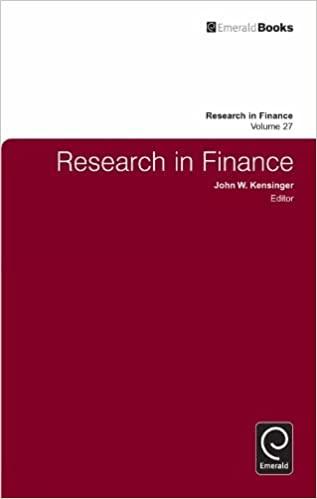Question
An all-equity firm must raise a given amount I < 1/2 for a new project. The manager has the chance to modify the project once
An all-equity firm must raise a given amount I < 1/2 for a new project. The manager has the chance to modify the project once it has begun. The sequence is as follows:
Period 0. The firm borrows an amount B, raises an amount S in new equity, and invests I=B+S to begin the project. The face value of debt is D, and it must be repaid in period 2. The rate of interest is zero. The cost of issuing equity is c>0 per unit.
Period 1. The manager completes the project in one of two ways. Thesafecompletion generates a certain cash ow of X=1 in period 2. The risky completion generates cash of X= with probability 1/2, and cash of X=0 with probability 1/2, where <2.
Period 2. Revenue is realized and all proceeds paid out.
Assumption: When making the completion decision in period 1, the manager maximizes the wealth of shareholders. Assume: D < 1 and > 1 for simplicity.
a) Find the period 1 condition that determines whether the safe or risky project is adopted.
b) Find the face value of the debt, D, as a function of the amount borrowed, B.
c) Write down the firm's optimization problem and characterize the optimal amount of debt as a function of and I. What might be a testable implication?
d) Prove that shareholders would be better off if the manager did not have the option to choose the risky project.
Step by Step Solution
There are 3 Steps involved in it
Step: 1

Get Instant Access to Expert-Tailored Solutions
See step-by-step solutions with expert insights and AI powered tools for academic success
Step: 2

Step: 3

Ace Your Homework with AI
Get the answers you need in no time with our AI-driven, step-by-step assistance
Get Started


